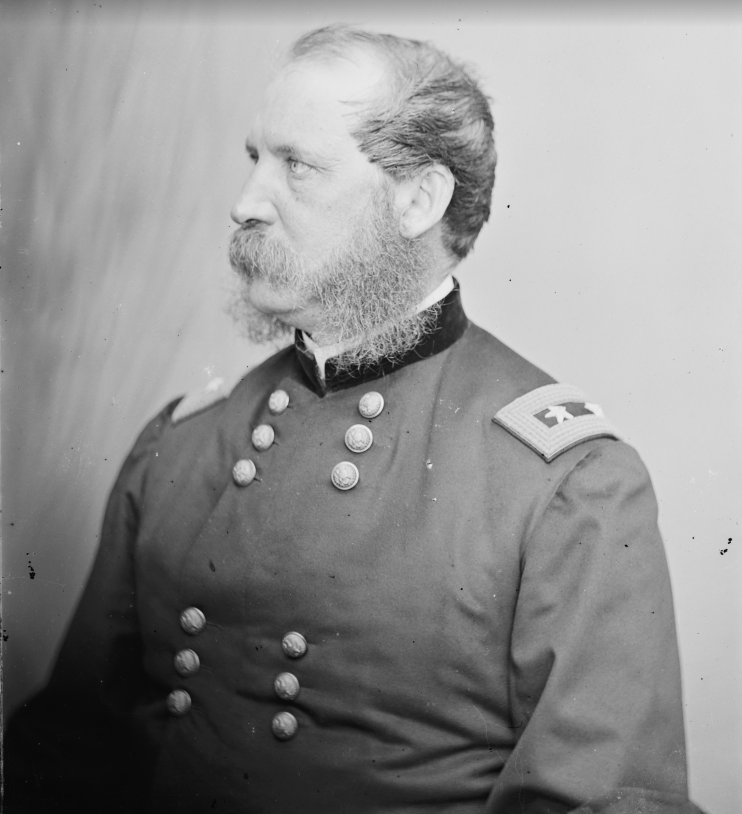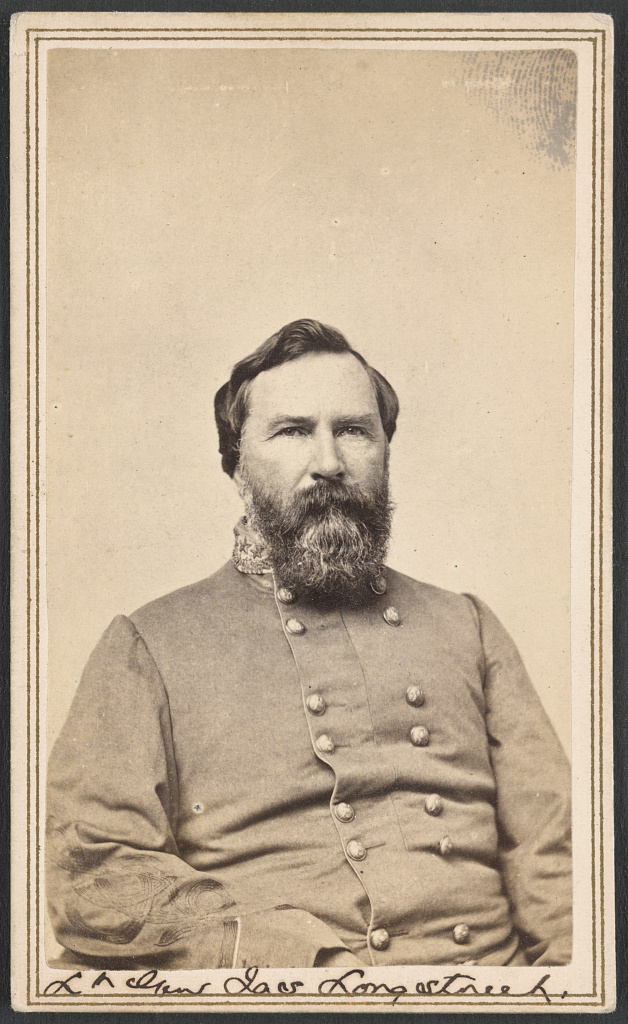Amnesty: Longstreet and Foster in East Tennessee, January 1864
Emerging Civil War welcome back guest author Colonel (ret) Ed Lowe
Less than twelve months after he formally issued the Emancipation Proclamation, President Abraham Lincoln issued the Proclamation of Amnesty and Reconstruction on December 8, 1863. As secession gained footing and before either side fired shots in anger, Lincoln initially believed secessionists comprised a small community within the South. As such, he hoped those loyal Southerners would rise, cast out the traitors, and send those looking to unite the country again back to Washington. Of course, the secession of eleven Southern states dashed Lincoln’s interpretation of events. Yet, after two long, bloody years of war, the president returned to his initial perception. The Confederates, offering surrender, might claim they had never left the Union in the first place. Consequently, they might send back to Washington the same people who condemned the Union in 1861. To prevent this, “his proclamation of amnesty required much sterner tests of loyalty and an acceptance of emancipation,” noted Lincoln biographer David Donald. And to this, Lincoln delivered, at least to some Republican party members.[1]
The December proclamation extended the hand of forgiveness “and a restoration of political rights to any white Southerner who took a loyalty oath, accepting abolition and pledging future allegiance to the Union.” The plan also applied to the seceded states. If these states formed a voting bloc for renewing their loyalty to the Union, equal to ten percent of that state’s 1860 electorate, then readmission to the Union could occur.[2] For the moderate Republicans in Washington, the December proclamation assuaged their political leanings to end the war swiftly. For the Radical Republicans, less so. Lincoln’s proclamation did not go far enough in punishing the South. As historian James McPherson stated, “By the end of 1863, a consensus existed among Republicans that the pieces of the old Union could not be cobbled together. One piece lost but not lamented was slavery; another that must go was the prominent role played in Southern politics by the old state’s rights secessionists.”[3]
Once published, however, the debates began, involving both the executive and legislative branches. Arguments for and against the proclamation consumed the highly volatile environment that was Washington. Lincoln was certainly not immune. Always astute and precise in his communications, he reminded the members of Congress that statesmen would not drive the results of this proclamation; however, “the destiny of all war policies and aims was up to the soldiers.”[4]
This takes us into East Tennessee’s cold, wintry days of January 1864, where Confederate Lieutenant General James Longstreet’s First Corps from Robert E. Lee’s Army of Northern Virginia operated just outside Knoxville against Union General John Foster (commanding the Army of the Ohio). Longstreet had moved out of Chattanooga toward Knoxville in early November 1863. The failure to capture the defenses in Knoxville (Fort Sanders on November 29, 1863) and reinforcements deploying from Chattanooga to Knoxville propelled Longstreet to move closer toward Virginia. As Union authorities chose to flood Confederate lines with news of the proclamation, inevitably, the flyers made their way to East Tennessee and into the hands of Longstreet’s men. Then, Longstreet and Foster began their correspondence on the handbills.[5]

Receiving knowledge of the flyers, Longstreet was furious, protesting to Foster “the presence of the amnesty offer among his troops.” The subsequent correspondence between the two generals made its way into Northern newspapers, including The New York Times. Foster even forwarded the letters between the two generals to General Henry Halleck in Washington. To Longstreet, writing to Foster on January 3, 1864, Lincoln’s policy of amnesty was “both dishonorable and impractical.” Any Confederates who would desert, Longstreet viewed, were not men of solid character and would benefit neither the Union nor injure the Confederate cause.[6]
Desertion, though, was a genuine concern for Longstreet in East Tennessee and Confederate President Jefferson Davis in Richmond. Speaking to the Confederate Congress in the winter of 1864, Davis acknowledged that “desertion, already a frightful evil, will become the order of the day.” The seminal work by Susannah Ural on the Confederate Texas Brigade addressed desertion in Longstreet’s command while in East Tennessee. Ural noted that of the 102 brigade court-martials during the war, 20 percent occurred while the brigade operated in East Tennessee. Of the six percent of soldiers from the brigade who deserted during the war, 34 percent (of that six percent) did so while in East Tennessee. For Longstreet and his commanders, desertion was a real possibility, and the distributed handbills only heightened the anxiety of Confederate authorities.[7]

Longstreet proffered that the distribution of handbills by Northern authorities was most disingenuous. Not to be outdone, on January 7, 1864, Foster responded to Longstreet’s correspondence from a few days previous. Apologizing somewhat sarcastically, Foster agreed sending the handbills through official channels “would have been more courteous.” As a matter of course, Foster included in his reply twenty of the handbills to Longstreet for that egregious error. Foster added he would “rely upon [his] generosity and desire for peace to give publicity to the same among your officers and men.” Not surprisingly, Longstreet returned the handbills to Foster with a firm admonishment, “You have laid your plans and work diligently to produce wholesale murder by servile insurrection.”[8]
The incident certainly did not sour Longstreet’s reputation to Southern readers, with newspapers reprinting the back-and-forth exchanges between James Longstreet and John Foster. If anything, the correspondences elevated Longstreet’s reputation and high standing. The Richmond Daily Dispatch referred to Longstreet as “one of the most sagacious and indefatigable of our military leaders” just a few months after this January incident. However, this episode proved a footnote in Longstreet’s long and arduous journey in East Tennessee. Reunited with Robert E. Lee at the end of April 1864, Longstreet led his First Corps again in battle under Lee’s leadership at the battle of the Wilderness. As Lincoln had predicted, the soldiers on the field would ultimately decide the matter, one way or the other.[9]
COL (ret) Ed Lowe served 26 years on active duty in the U.S. Army with deployments to Operation Desert Shield/Storm, Haiti, Afghanistan (2002 & 2011), and Iraq (2008). He attended North Georgia College and has graduate degrees from California State University, U.S. Army War College, U.S. Command & General Staff College, and Webster’s University. He is currently an adjunct professor for the University of Maryland/Global Campus & Elizabethtown College, where he teaches history and government. He is currently working on two books for Savas Beatie. The first covers Longstreet’s First Corps from Gettysburg to East Tennessee, and the second is an Emerging Civil War Series book on Longstreet’s East Tennessee Campaign. He is married with two daughters and lives in Ooltewah, Tennessee. He currently serves as President of the Chickamauga & Chattanooga Civil War Round Table, reconstituted in September of 2020.
[1] Donald, David. (1995). Lincoln. Simon & Schuster, 472.
[2] Varon, Elizabeth (2023). Longstreet: The Confederate General who defied the South. Simon & Schuster, 99; Historian Kenneth Stampp stated Lincoln referred to this voting bloc as the “tangible nucleus.” Cited in. Stampp, Kenneth M. (1965) The era of Reconstruction: 1865-1877. Alfred A. Knopf, 39.
[3] McPherson, James (1988). Battle cry of freedom. Oxford University Press, 588, 699. McPherson added that “To most abolitionists and radical Republicans [The Amnesty Proclamation] was unacceptable. They insisted that simply to abolish slavery without also destroying the economic and political structure of the old order would merely convert Black people from slaves to landless serfs and leave the political power of the planter class untouched” (p. 700). The Radical Republicans subsequently passed their plan, the Wade-Davis Bill, which Lincoln ended up pocket-vetoing.
[4] Hyman, Harold M. (1973). A more perfect Union: The impact of the Civil War and Reconstruction on the Constitution. Houghton Mifflin Company, 265.
[5] Varon, Longstreet, 99.
[6] Young, Patrick (2022, February 6). When Longstreet objected to amnesty offer for Confederate soldiers, January 1864. Https://thereconstructionera.com/when-longstreet-objected-to-amnesty-for-confederate-soldiers/; Varon, Longstreet, 99.
[7] Ural, Susannah J. (2017). Hood’s Texas Brigade: The soldiers and families of the Confederacy’s most celebrated unit. LSU Press, 195-199; Rowland, Dunbar. (1923). Jefferson Davis, Constitutionalist: His letters, papers, and speeches (Ed.). https://academic.oup.com/ahr/article-abstract/29/2/352/38468?redirectedFrom=fulltext&login=false.
[8] Richmond Daily Dispatch (Vol. XXVI, No. 26), Jan. 30, 1864.
[9] Varon, Longstreet, 100.